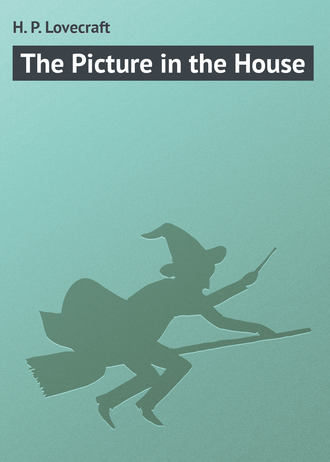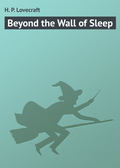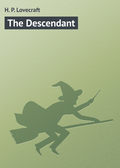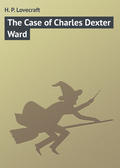
Говард Филлипс Лавкрафт
The Picture in the House
I had somehow taken it for granted that the house was abandoned, yet as I approached it I was not so sure, for though the walks were indeed overgrown with weeds, they seemed to retain their nature a little too well to argue complete desertion. Therefore instead of trying the door I knocked, feeling as I did so a trepidation I could scarcely explain. As I waited on the rough, mossy rock which served as a door-step, I glanced at the neighboring windows and the panes of the transom above me, and noticed that although old, rattling, and almost opaque with dirt, they were not broken. The building, then, must still be inhabited, despite its isolation and general neglect. However, my rapping evoked no response, so after repeating the summons I tried the rusty latch and found the door unfastened. Inside was a little vestibule with walls from which the plaster was falling, and through the doorway came a faint but peculiarly hateful odor. I entered, carrying my bicycle, and closed the door behind me. Ahead rose a narrow staircase, flanked by a small door probably leading to the cellar, while to the left and right were closed doors leading to rooms on the ground floor.
Leaning my cycle against the wall I opened the door at the left, and crossed into a small low-ceiled chamber but dimly lighted by its two dusty windows and furnished in the barest and most primitive possible way. It appeared to be a kind of sitting-room, for it had a table and several chairs, and an immense fireplace above which ticked an antique clock on a mantel. Books and papers were very few, and in the prevailing gloom I could not readily discern the titles. What interested me was the uniform air of archaism as displayed in every visible detail. Most of the houses in this region I had found rich in relics of the past, but here the antiquity was curiously complete; for in all the room I could not discover a single article of definitely post-revolutionary date. Had the furnishings been less humble, the place would have been a collector’s paradise.
As I surveyed this quaint apartment, I felt an increase in that aversion first excited by the bleak exterior of the house. Just what it was that I feared or loathed, I could by no means define; but something in the whole atmosphere seemed redolent of unhallowed age, of unpleasant crudeness, and of secrets which should be forgotten. I felt disinclined to sit down, and wandered about examining the various articles which I had noticed. The first object of my curiosity was a book of medium size lying upon the table and presenting such an antediluvian aspect that I marvelled at beholding it outside a museum or library. It was bound in leather with metal fittings, and was in an excellent state of preservation; being altogether an unusual sort of volume to encounter in an abode so lowly. When I opened it to the title page my wonder grew even greater, for it proved to be nothing less rare than Pigafetta’s account of the Congo region, written in Latin from the notes of the sailor Lopex and printed at Frankfurt in 1598. I had often heard of this work, with its curious illustrations by the brothers De Bry, hence for a moment forgot my uneasiness in my desire to turn the pages before me. The engravings were indeed interesting, drawn wholly from imagination and careless descriptions, and represented negroes with white skins and Caucasian features; nor would I soon have closed the book had not an exceedingly trivial circumstance upset my tired nerves and revived my sensation of disquiet. What annoyed me was merely the persistent way in which the volume tended to fall open of itself at Plate XII, which represented in gruesome detail a butcher’s shop of the cannibal Anziques. I experienced some shame at my susceptibility to so slight a thing, but the drawing nevertheless disturbed me, especially in connection with some adjacent passages descriptive of Anzique gastronomy.






